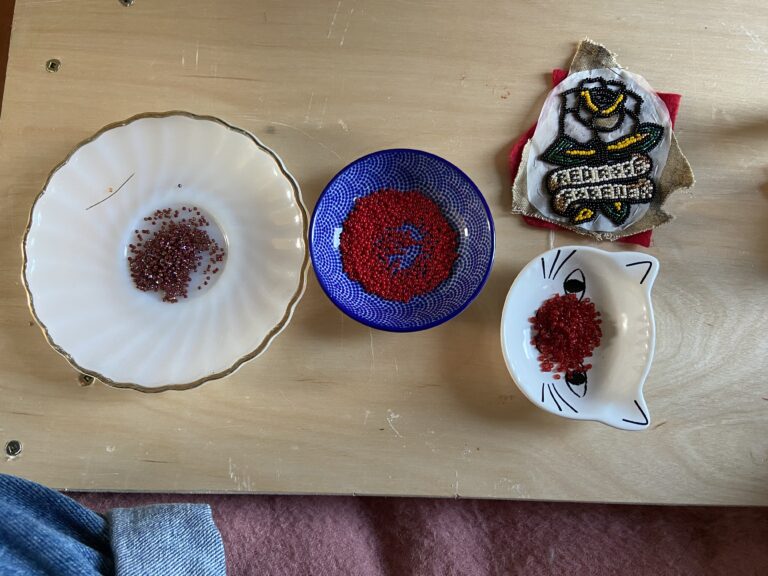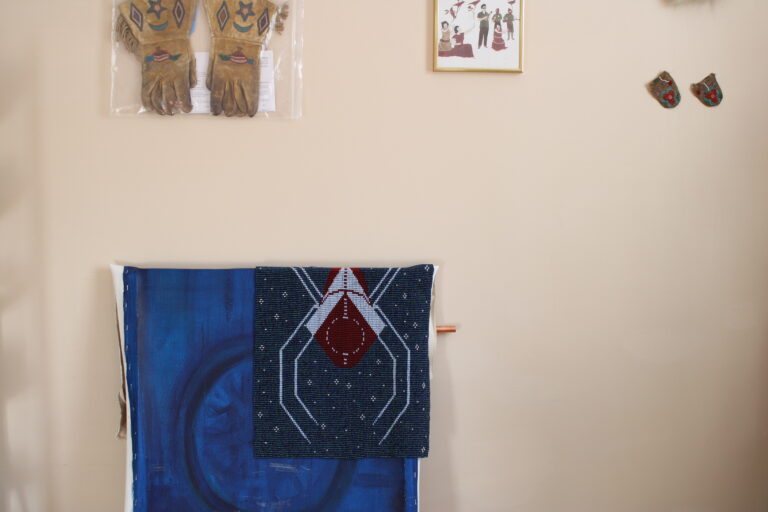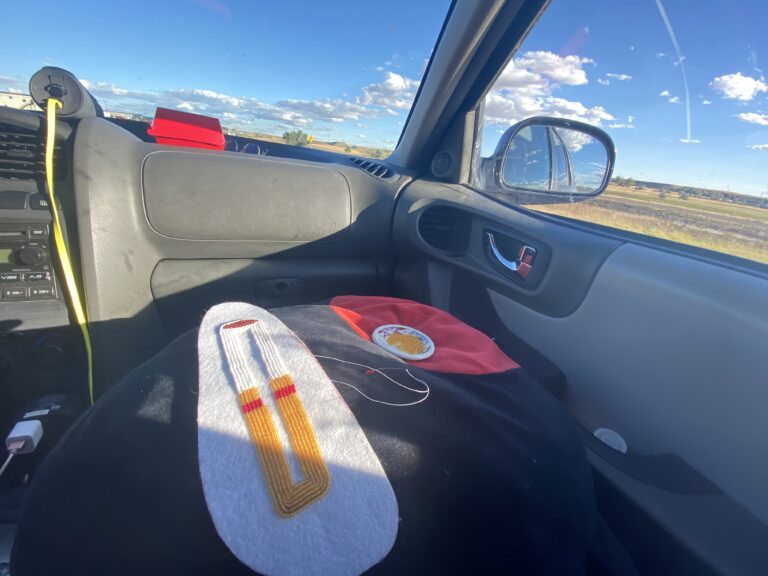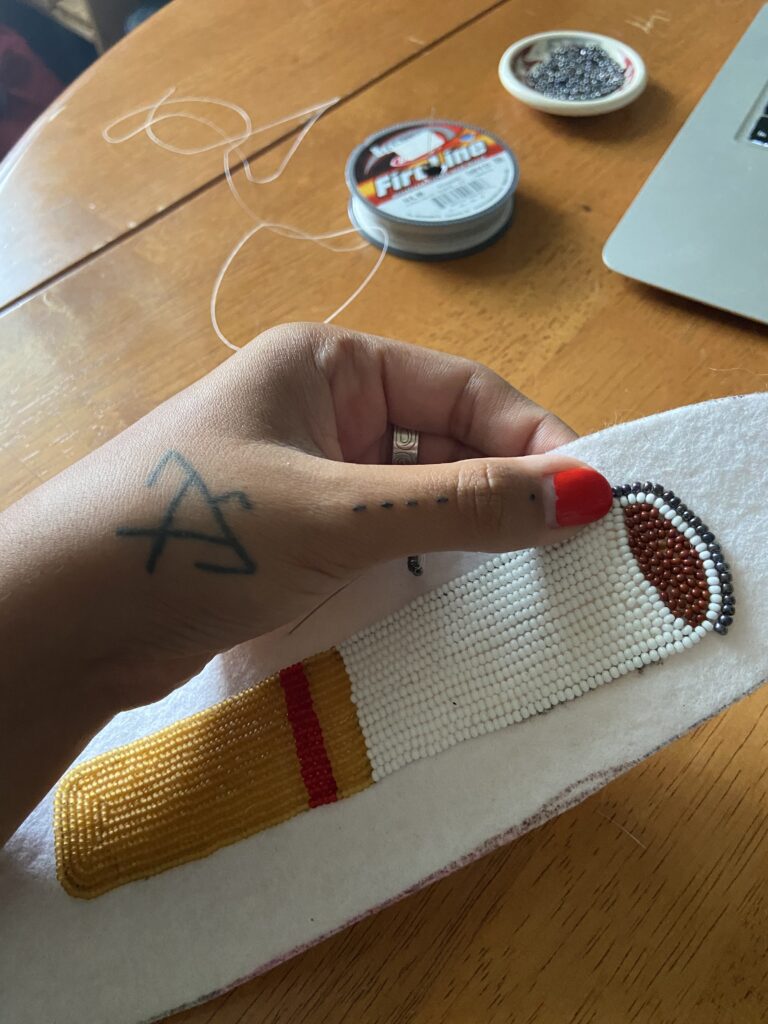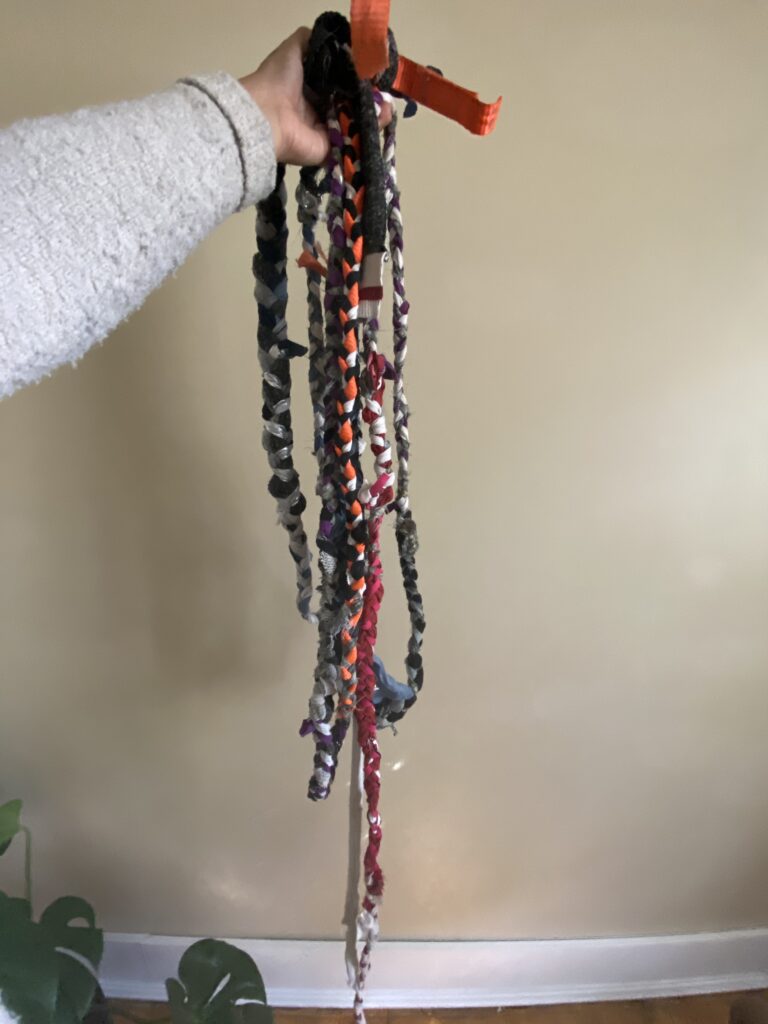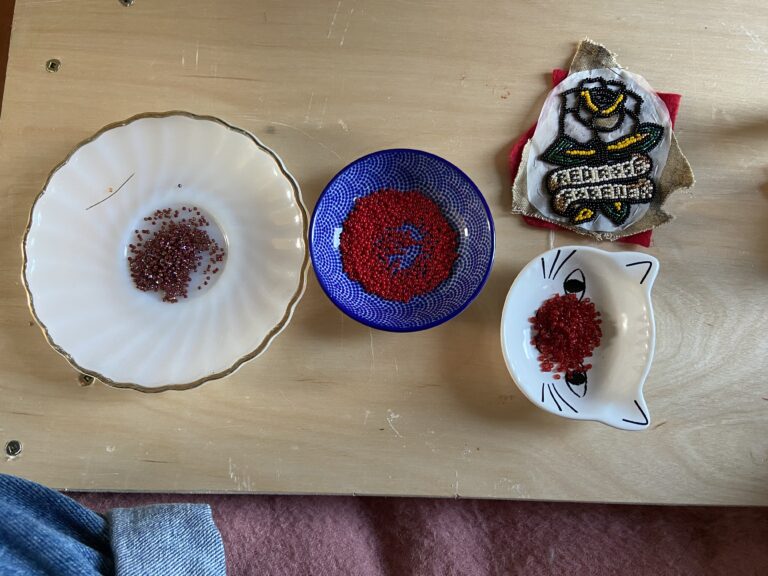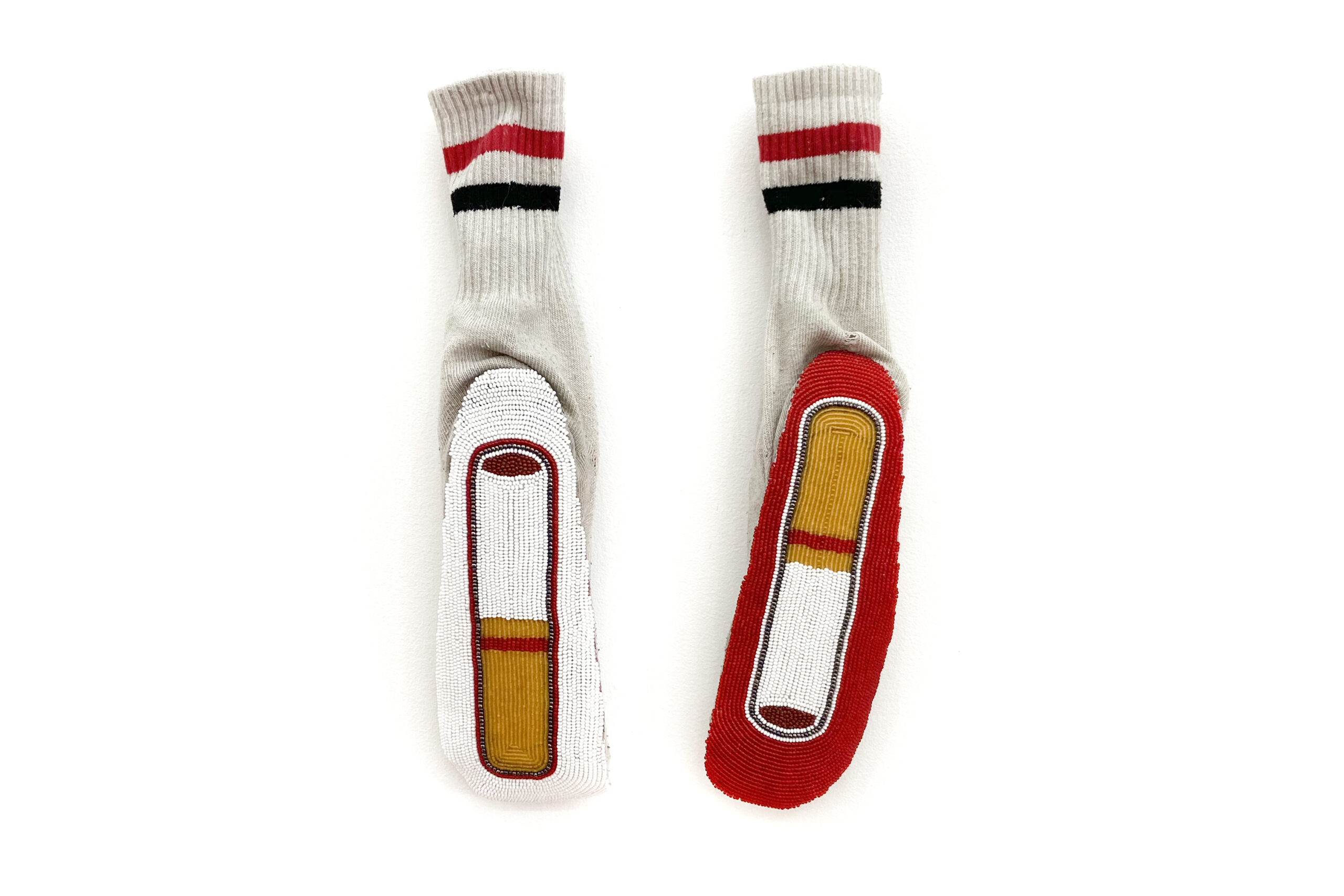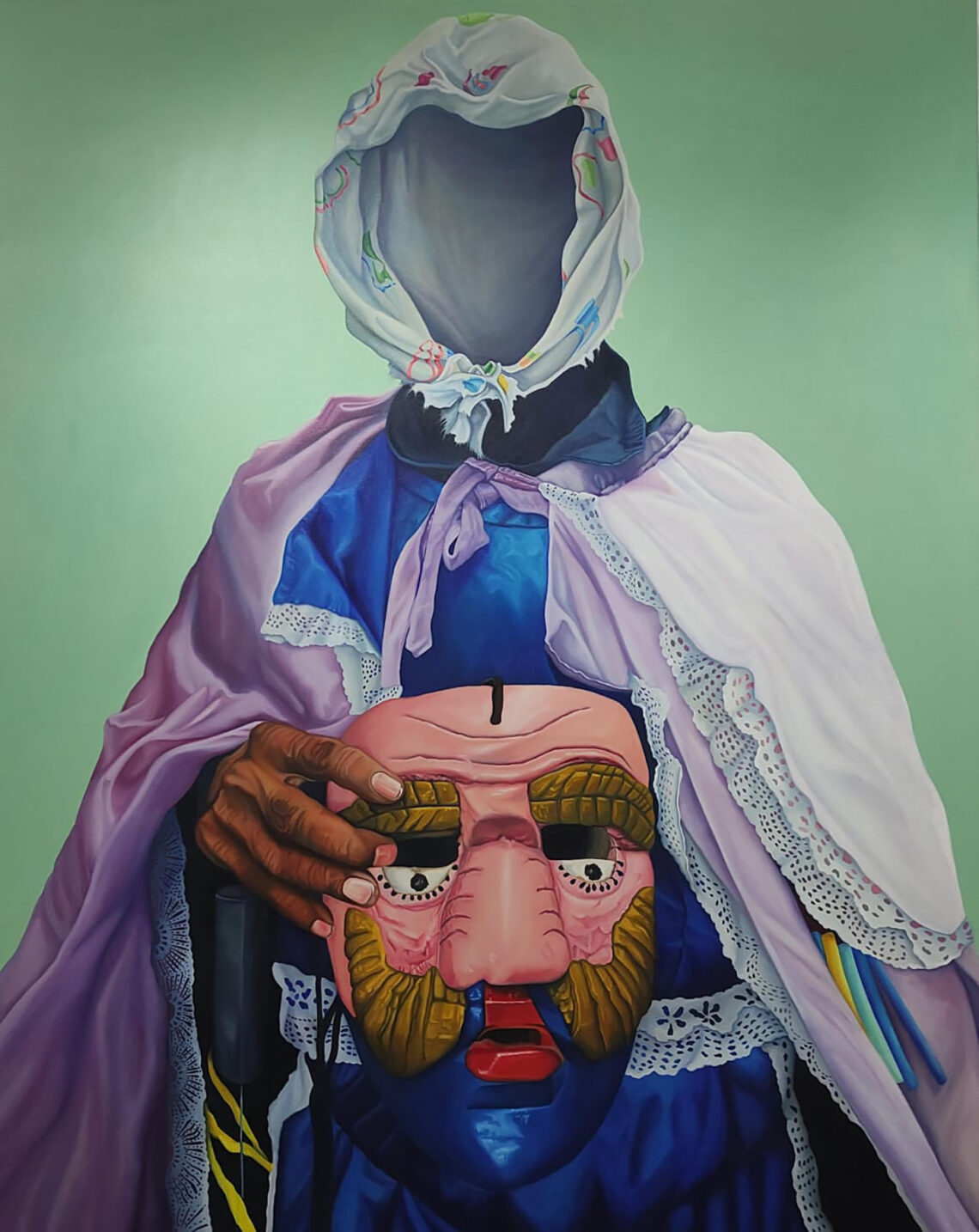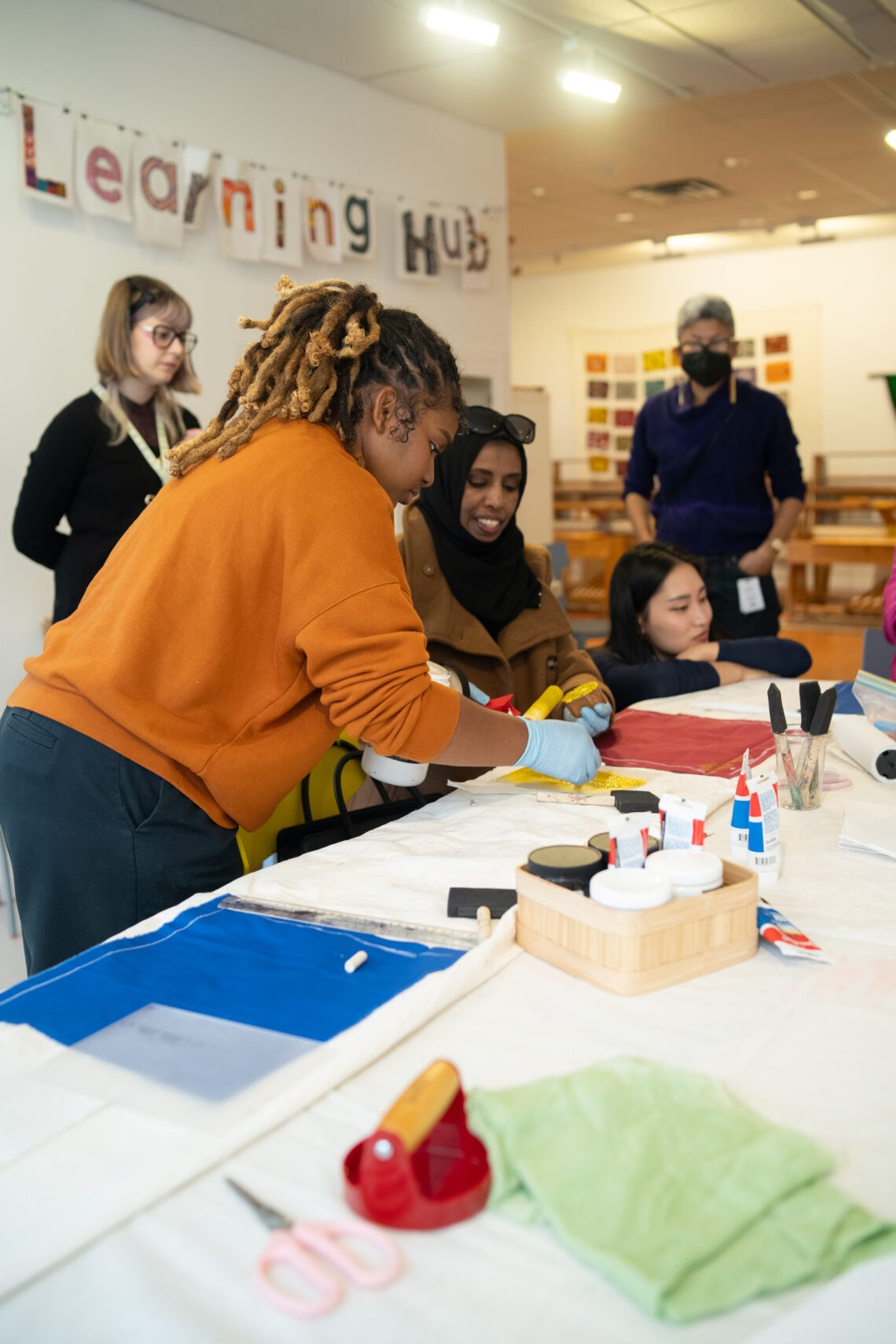Curiously Crafting – A Conversation with Audie Murray
By Justice Stacey
Hello there! I’m Justice, the Museum's Educator in Residence and I’d like to welcome you to Curiously Crafting, a journey into the wonderfully wide world of textiles. Through the stories of three textile artists and their practice, we will learn that people come to work in this medium from every background imaginable and in a multitude of ways. It is my hope that these stories will encourage us to work in methods of learning and making that we never thought possible as a means of engaging in conversations about the past, present, and future of textiles. This series was made possible through a Seed Grant of the Ontario Trillium Foundation.
In this edition of Curiously Crafting, we explore the many tiny stitches of artist Audie Murray that make up an incredible body of work. Listen to a conversation about Audie’s ways of learning and creating and lose yourself in the thousands upon thousands of beads of her creations. Then create a protective amulet for yourself by trying out a DIY project designed by Audie Murray. Audie received an Honourable Mention through the Melissa Levin Emerging Artist Award in 2019, a program administered by the Textile Museum of Canada, and we are excited to share more of her practice here.
Audie Murray
Working in a wide range of techniques and materials, Métis artist, Audie Murray is not one to shy away from experimenting with the unconventional. This experimentation is blended with ancestral knowledge to bring about work that surprises and delights the viewer. Currently living in Treaty Four Terrifory in Regina, Saskatchewan, Audie Murray is currently completing an MFA; other educational experiences include spending a summer with the Earthline Tattoo Collective and learning from family and friends.
Download instructions to create your own Protective Amulet, a DIY project created by Murray.
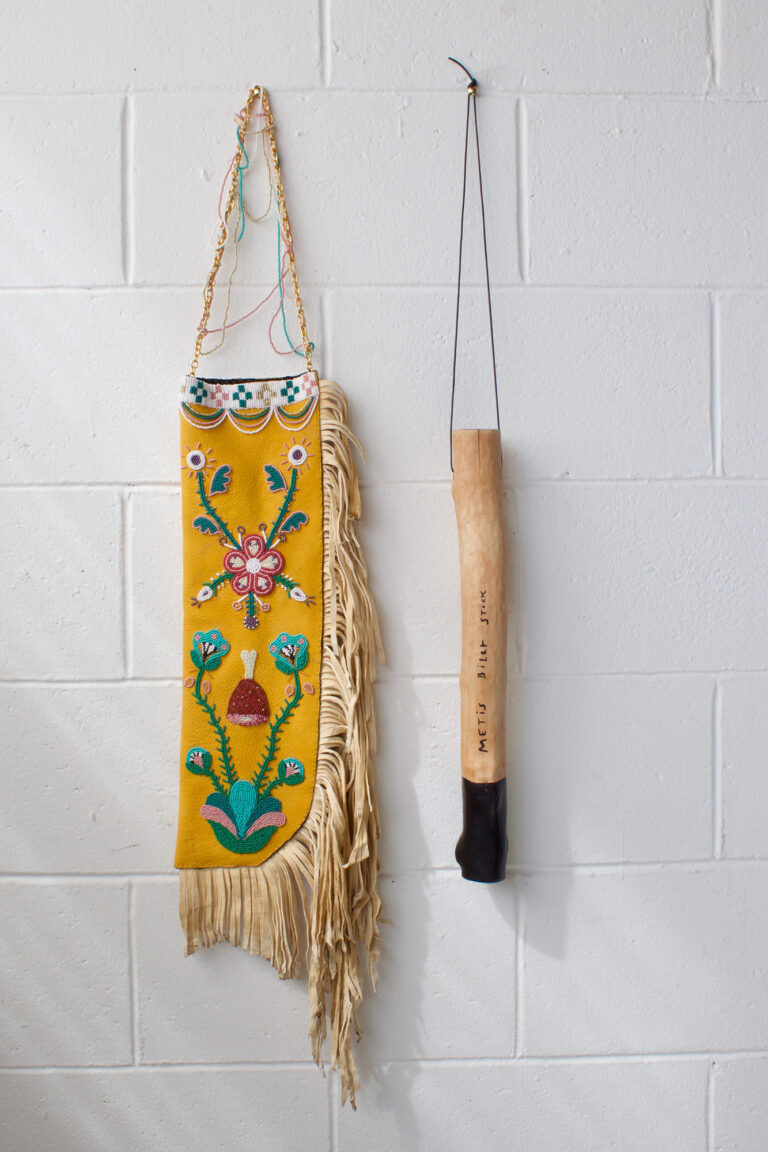
When I came across Audie Murray’s work I was delighted by her beaded sock creations. Every time I look at them I find myself vividly imagining the sensation of wearing them. Few pieces bring about such a strong sensorial reaction when viewed on a computer screen. As I looked further into Audie’s practice and read about her experience learning hand poking and skin stitching with the Earthline Tattoo Collective it led me to think deeply about what creating accessible learning and knowledge means. To be accessible is to be able to be easily reached and/or entered. A library may be filled with freely available books but if there is no wheelchair ramp the space is not accessible. Knowledge of Indigenous tattooing practices became inaccessible over time as a result of colonial suppression but it is now seeing a brilliant reemergence thanks to the hard work and dedication of Indigenous tattoo artists. Audie and all of these tattoo artists have contributed to a richer, more accessible world of learning.
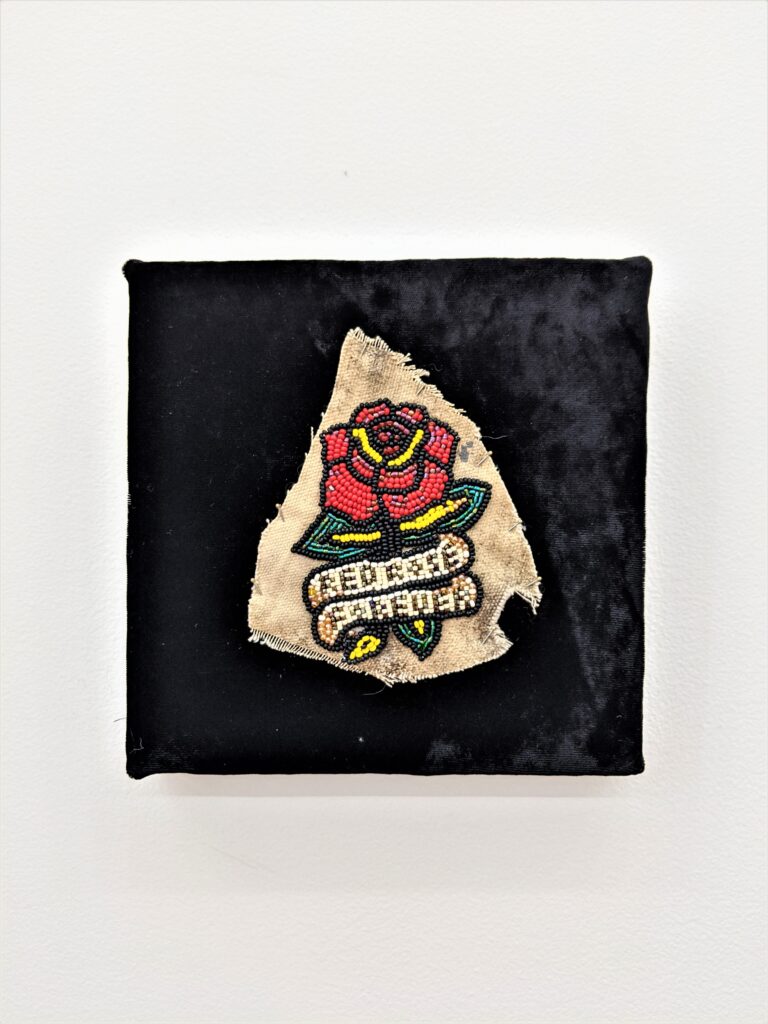
All of us encounter a lack of access at times. We face obstacles that make creative expression seem like an insurmountable task. But Audie’s brilliant work and experiences have taught me that through community and patience we can create whatever we put our mind to; just take it one stitch at a time!
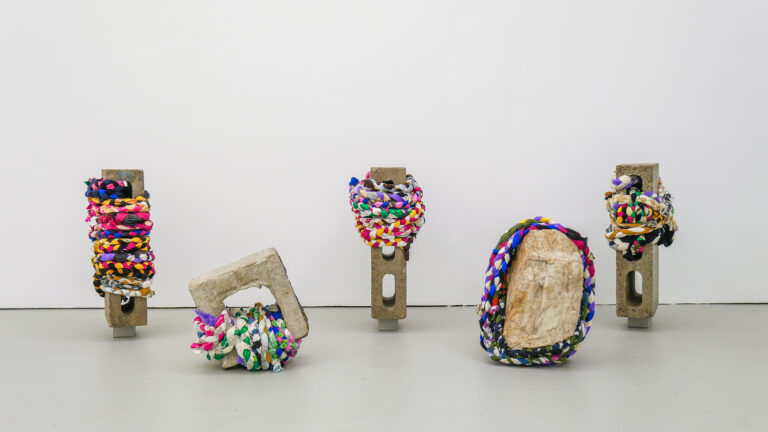
Justice and Audie in Conversation
Join me and Audie Murray in a conversation discussing everything from the meditative quality of beading to reclaiming the art of skin stitching.
Protective Amulet
Craft can lead to feelings of comfort and reassurance both while making and in the resulting object. In this project designed by Audie Murray, you will bead a Protective Amulet that can bring about protection and/or comfort. Gather some beads and objects that symbolize protection to you and get crafting!
